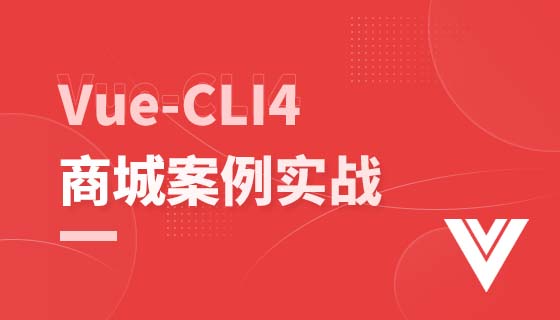
在现代的单页应用(spa)中,动态修改浏览器标签页的标题(即document.title)是常见的需求,它能提升用户体验,让用户清晰地知道当前页面的内容。例如,从一个通知页面跳转到详情页,标题会从“通知”变为“通知详情”。通常,我们通过直接赋值document.title = "新标题";来实现这一功能。大多数情况下,这种方式工作良好,标签页标题会立即更新。
然而,在某些特定场景下,尤其是涉及浏览器历史导航时,Chrome浏览器可能会出现一个令人困惑的现象:当用户点击浏览器的“后退”按钮返回到之前的路由时,尽管通过开发者工具检查document.title显示的是正确的标题,但浏览器标签页上显示的标题却仍然是旧的或不正确的标题。这种不一致性在Firefox等其他浏览器中并未观察到,这表明它可能是一个Chrome特有的渲染或历史状态管理问题。
假设一个SPA有routeA和routeB两个路由。
即使在开发者工具中手动修改document.title,标签页的文本也可能不再更新,除非刷新整个页面。这表明浏览器在处理历史状态和document.title的关联时,可能存在一个缓存或渲染上的“卡顿”。
针对这一问题,一个简单但出乎意料有效的 workaround 是在设置期望的document.title之前,先将其设置为一个空字符串(或任何临时值)。这似乎能强制浏览器重新评估或刷新其内部对标题的缓存状态。
核心代码示例:
/**
* 安全地更新浏览器标签页标题。
* 解决Chrome在历史回退时可能不更新标题的问题。
* @param {string} newTitle 期望的新标题。
*/
function updateDocumentTitle(newTitle) {
// 步骤1:先将标题设置为空字符串,强制浏览器进行一次状态刷新
document.title = "";
// 步骤2:再设置期望的新标题
document.title = newTitle;
}
// 示例用法:
// 当你需要更新标题时,调用此函数
updateDocumentTitle("我的新页面标题");这个双重赋值的技巧,通过先清空再设置,似乎能够绕过Chrome在特定场景下对document.title的惰性更新机制。
仅仅在每次设置标题时使用上述方法可能不足以解决回退时的所有问题。由于问题发生在浏览器完成“历史回退”操作之后,我们需要确保在回退完成后重新应用这个标题更新逻辑。这意味着需要在SPA中监听历史状态的变化。
在SPA中集成:
监听浏览器popstate事件:popstate事件在用户点击浏览器前进/后退按钮时触发。当此事件发生时,我们应该根据当前路由重新设置document.title。
window.addEventListener('popstate', () => {
// 在这里,你需要根据当前的路由或应用程序状态,确定正确的标题
// 假设你有一个函数可以获取当前路由的标题
const currentRouteTitle = getTitleForCurrentRoute();
updateDocumentTitle(currentRouteTitle);
});
// 假设的获取当前路由标题的函数
function getTitleForCurrentRoute() {
// 根据你的路由系统(例如,React Router, Vue Router, Angular Router)
// 获取当前路由的信息,并返回对应的标题。
// 这通常涉及到检查 window.location.pathname 或你的路由状态管理。
if (window.location.pathname === '/routeA') {
return '标题A';
} else if (window.location.pathname === '/routeB') {
return '标题B';
}
return '默认标题';
}结合路由库的导航守卫/钩子: 大多数SPA路由库(如Vue Router、React Router、Angular Router)都提供了导航守卫或生命周期钩子,允许你在路由切换完成后执行操作。这是更推荐的方式,因为它能更精确地控制标题更新的时机。
Vue Router 示例:
import { createRouter, createWebHistory } from 'vue-router';
const router = createRouter({
history: createWebHistory(),
routes: [
{ path: '/routeA', component: A, meta: { title: '标题A' } },
{ path: '/routeB', component: B, meta: { title: '标题B' } },
],
});
router.afterEach((to) => {
// 从路由元信息中获取标题,或者根据路由路径动态生成
const newTitle = to.meta.title || '默认标题';
updateDocumentTitle(newTitle);
});
// 使用上面定义的 updateDocumentTitle 函数
function updateDocumentTitle(newTitle) {
document.title = "";
document.title = newTitle;
}
export default router;React Router 示例(使用useEffect钩子):
import React, { useEffect } from 'react';
import { useLocation } from 'react-router-dom';
function AppTitleUpdater() {
const location = useLocation();
useEffect(() => {
// 根据当前location或路由配置获取标题
const getTitleForLocation = (pathname) => {
if (pathname === '/routeA') return '标题A';
if (pathname === '/routeB') return '标题B';
return '默认标题';
};
const newTitle = getTitleForLocation(location.pathname);
updateDocumentTitle(newTitle);
}, [location.pathname]); // 当路由路径改变时触发
return null; // 此组件不渲染任何UI
}
// 使用上面定义的 updateDocumentTitle 函数
function updateDocumentTitle(newTitle) {
document.title = "";
document.title = newTitle;
}
// 在你的App组件中使用 <AppTitleUpdater />
function App() {
return (
<div>
<AppTitleUpdater />
{/* 你的路由和其他组件 */}
</div>
);
}通过采用这种“先清空再设置”的策略,并结合SPA路由系统的导航钩子,可以有效地解决Chrome浏览器在历史回退时标签页标题不更新的困扰,从而为用户提供更加一致和专业的浏览体验。
以上就是解决单页应用中Chrome浏览器回退后标签页标题不更新的问题的详细内容,更多请关注php中文网其它相关文章!

每个人都需要一台速度更快、更稳定的 PC。随着时间的推移,垃圾文件、旧注册表数据和不必要的后台进程会占用资源并降低性能。幸运的是,许多工具可以让 Windows 保持平稳运行。




Copyright 2014-2025 https://www.php.cn/ All Rights Reserved | php.cn | 湘ICP备2023035733号